Heading out the door? Read this article on the new Outside+ app available now on iOS devices for members! Download the app.
Slim doesn’t always equal strong and healthy. A person of normal weight — or even someone who’s underweight – could have a body type commonly referred to as “skinny fat” if they possess a low overall body weight with little muscle mass and a high percentage of body fat. And while they may appear to have an enviable composition, they may be subject to health risks usually associated with those who are overweight, such as heart disease and diabetes.
Luckily, a few changes to your program can help pull you out of the “skinny fat” category. Nick Clayton, MBA, CSCS, education coordinator for the National Strength and Conditioning Association, notes that while cardio is important for overall health, “skinny fat” ladies should focus on strength training and a clean diet. Cardio activity, he explains, is catabolic in nature, which can slow muscle growth — a fact someone might want to explain to the girl who’s ever-present on that bike.
Pete McCall, MS, exercise physiologist for the American Council on Exercise, agrees. “There is a lot of research indicating that strength training is great for burning fat,” he points out, adding that tacking muscle mass onto your frame will also increase your basal metabolic rate and help the body to more effectively metabolize nutrients such as carbohydrates — both key factors in whittling away body fat.
Your Session Strategy
But what’s the best strength plan to melt fat from your frame? A Syracuse University study found that a workout of opposing muscle group supersets resulted in a greater calorie-per-minute burn than traditional sets — and the workout took less time to complete. This program follows this principle; follow it three times per week, leaving 48 hours of rest between workouts, to reduce body fat and boost lean mass all over your frame.
How To
Perform these exercises as supersets in the order shown. For example, do the close-grip bench press and upright barbell row back to back, rest for the specified amount of time, and repeat twice before moving on to your next superset.
Close-Grip Bench Press
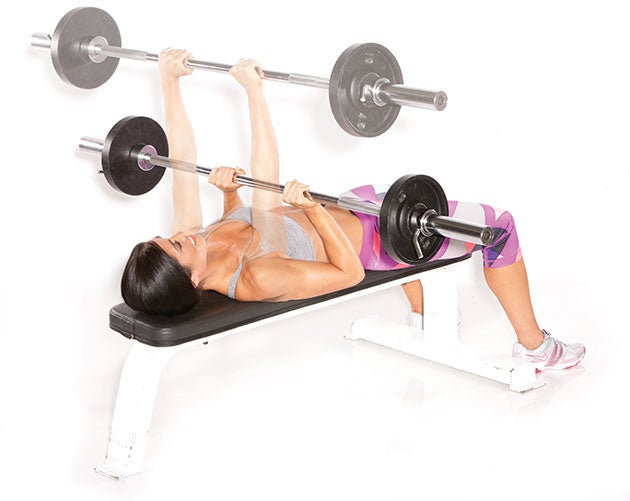
Target Muscles: triceps brachii, anterior deltoids, pectoralis major
Set Up: Lie on your back on a bench. Hold a barbell a few inches above your chest, with hands spaced narrower than shoulder width.
Action: Press the bar straight above your chest, then slowly reverse back to the start.
Tip: Make sure your elbows point forward throughout the motion.
Upright Barbell Row
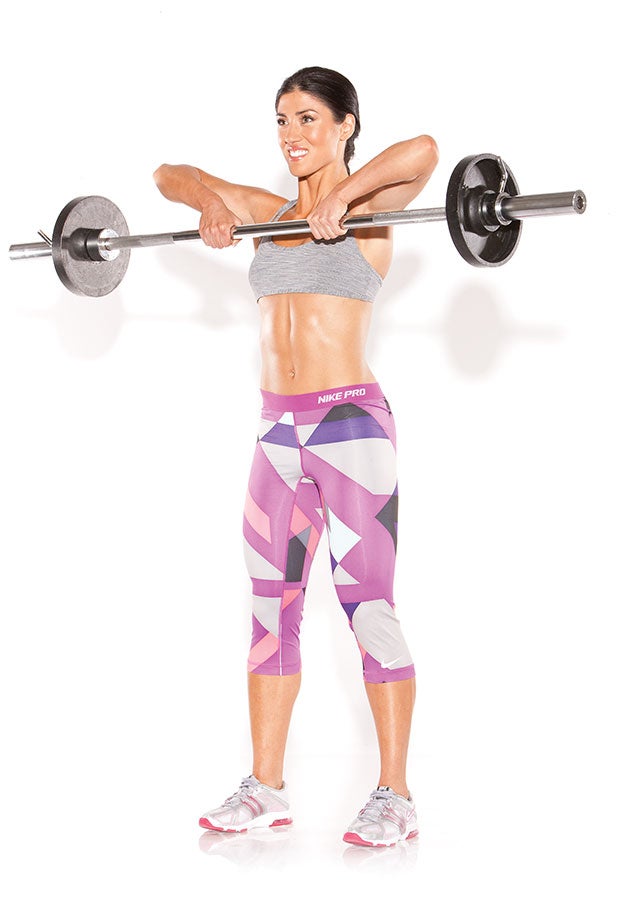
Target Muscles: trapezius, lateral and anterior deltoids
Set Up: Stand and hold a barbell with a narrow overhand grip. Your palms should face the fronts of your thighs.
Action: Pull the barbell up until it is at collar-bone level or slightly lower. Pause, then extend your arms.
Tip: Lead the move with your elbows; they should be higher than your wrists at the top of the move.
Walking Lunge
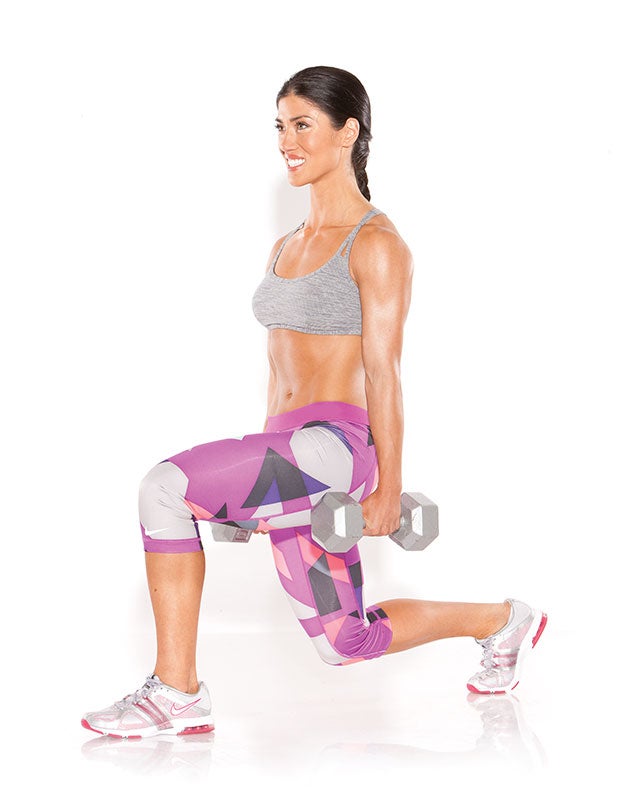
Target Muscles: quadriceps, gluteus maximus, hamstrings, gastrocnemius
Set Up: Stand with your feet hip-width apart and hold a moderately heavy dumbbell in each hand at your sides.
Action: Step forward with one foot and bend both legs to lunge. Stop when your rear knee is about an inch from the floor, then press through your front heel to extend your legs. Step your rear foot in front of the other and lower into another lunge. Continue alternating legs.
Tip: Smaller steps better target the quads, while larger steps hone in on the glutes.
Hip Thrust
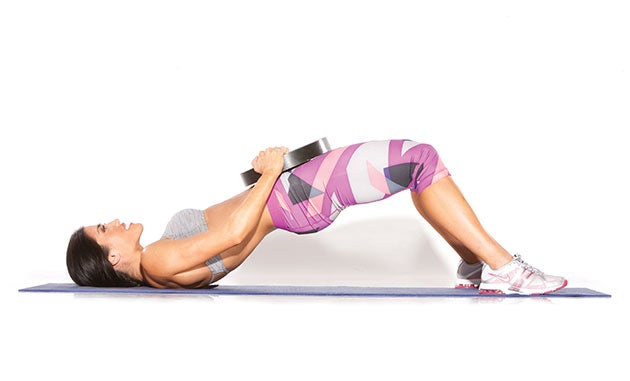
Target Muscles: gluteus maximus, hamstrings, erector spinae
Set Up: Lying face up on a mat, bend your legs and place your feet flat on the floor. Hold a weight plate across your pelvis for extra resistance.
Action: Contract your glutes as you lift your hips from the mat; your body should form a straight line from your neck to your knees. Reverse without letting your butt touch the mat, and repeat.
Tip: Increase the difficulty by raising one foot from the floor and pointing your toes. (Don’t forget to work both sides!)
Twisting Biceps Curl
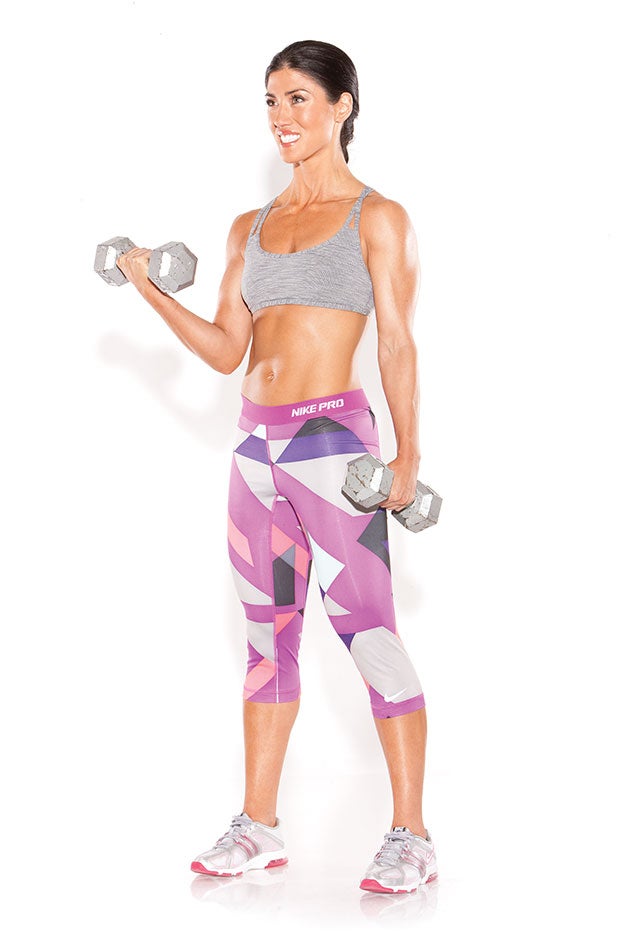
Target Muscles: biceps brachii, brachialis, brachioradialis
Set Up: Stand and hold a medium-weight dumbbell in each hand at your sides with a neutral grip (palms facing your sides).
Action: Keep your upper arm tight to your side as you bend one elbow to lift the weight up to your shoulder. As you lift, rotate your forearm so that your palm faces you at the top of the move. Reverse and repeat, alternating arms.
Tip: Instead of lifting and lowering at the same pace, return to the start slowly — one second up and three seconds down.
Triceps Kickback
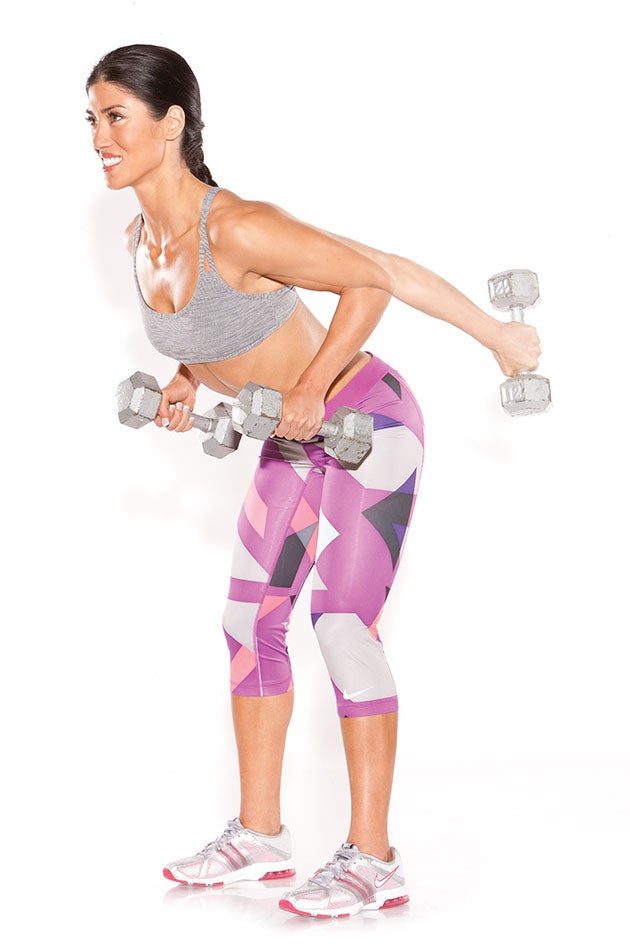
Target Muscles: triceps brachii
Set Up: Stand and hold a dumbbell in each hand. Bend your knees slightly and lean forward from your hips. Flex your elbows to 90 degrees and raise your arms so that your triceps are almost parallel to the ground.
Action: Extend your elbows to bring the weights behind you; return to the start.
Tip: Make sure you don’t rock back and forth from your hips as you rep it out!
Weighted Ball Crunch

Target Muscles: rectus abdominis, internal and external obliques
Set Up: Sit on a stability ball and walk your feet forward until your back is supported. Hold a medicine ball behind your head with both hands by bending your elbows as shown.
Action: Without moving your arms, contract your abs and flex forward to lift your upper back from the stability ball. Hold for one count at the top, then slowly reverse to return to the start.
Tip: Tilt your pelvis upward as you crunch to engage your lower abdominals.
Weighted Back Extension
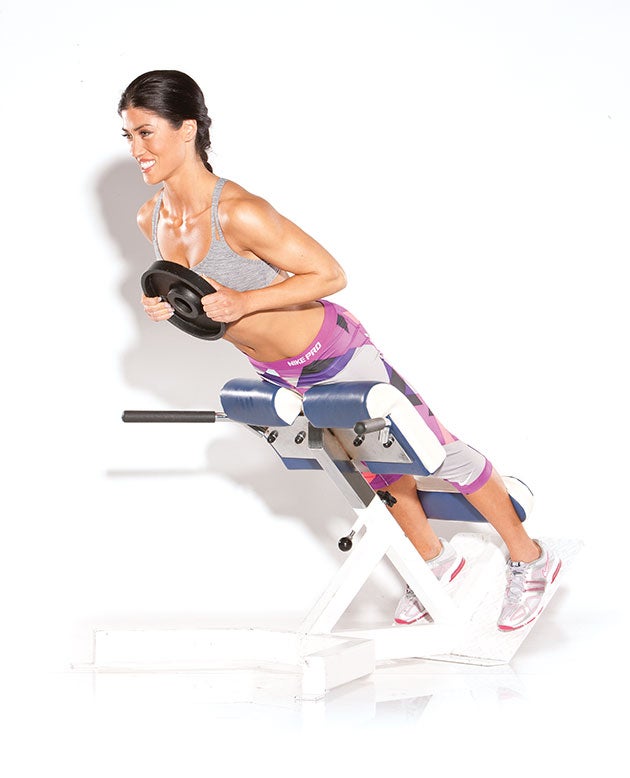
Target Muscles: erector spinae, gluteus maximus, hamstrings
Set Up: Position yourself at the hip extension apparatus so that your pelvis and calves are supported by the padding. (Set the height so that you can easily hinge forward from your hips.) Hold a weight plate or dumbbell against your chest for extra resistance.
Action: Bend forward as far as you can go, then contract your glutes to assist in raising yourself back to an upright position.
Tip: While slight hyperextension in the lower back is fine, work within your own range of motion — if you experience pain, don’t extend as far.